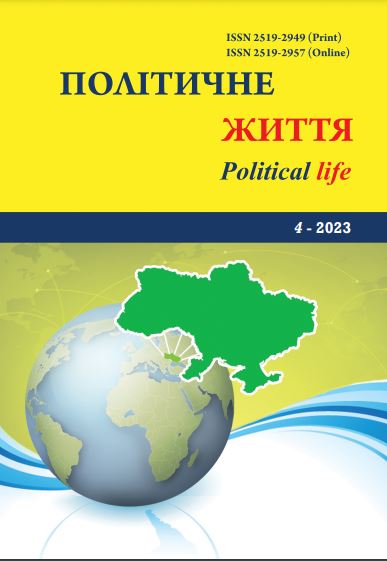Public policy system in the context of parametric general systems theory
DOI:
https://doi.org/10.31558/2519-2949.2023.4.9Keywords:
parametric general systems theory; systemic parameters; public policy domain; public policy models; public policy research methodologyAbstract
This article explores the public policy system through the lens of binary attributive systemic parameters of the parametric general systems theory (PGST). It outlines the distinct features of PGST among other methodologies of its class and defines the core essence of the public policy system from the perspective of PGST parameters. The system is characterized as ordered, with partial intermediacy, fully self-regenerative, segmented, and not universally reliable. The primary characteristics of the public policy system are delineated in terms of binary attributive parameters, encompassing autonomy, purposiveness, elementariness, self-regeneration, segmentation, and stability amid element changes, among others.
The system’s limited resilience to the loss of its elements is deemed crucial. It is noted that this system is external and primary, with a multilayered structure. The article introduces several additional general systemic parameters, such as stationarity, system strength, element-non-autonomy, heterogeneity, and homogeneity. The absence of cyclicality and linearity in the system is also highlighted. Specific aspects, such as purposiveness, the nature of system-forming relationships, and substrate element properties, are singled out as useful for studying public policy systems.
The introduction of second-level parameters, such as system purposiveness and the nature of system-forming relationships on system elements, is justified for characterizing the public policy system. It is emphasized that the identified values of existing general systemic parameters for this system can serve as a systemic foundation for further research into public policy systems in various societies at different time points. The article acknowledges that the weak link in PGST is the reverse verbal interpretation of parametric formalism.
References
Берталанфи Л. фон. Общая теория систем – обзор проблем и результатов. Системные исследования : Ежегодник. М.: Наука, 1969. С. 30–54.
Мамчур Е. А., Овчинников Н. Ф., Уёмов А. И. Принцип простоты и меры сложности. М.: Наука, 1989. 303 с.
Уемов А.И. Вадим Садовский: будущее в прошедшем. URL: http://www.philosof.onu.edu.ua/elb/uemov/sadovski.pdf.
Уёмов А. И. Системный подход и общая теория систем М.: Мысль, 1978. 272 с.
Уёмов А. И. Системы и системные параметры. Проблемы формального анализа систем. М., 1968. С.27-28.
Цофнас А.Ю. Теория систем и теория познания. Одесса: АстроПринт, 1999. 308 с.
Шабров О.Ф. Политическая кибернетика. Политическая энциклопедия. В 2 т. Т.2. М.: Мысль, 1999. С. 171 – 172.
Ashby W.R. Design for a brain: the origin of adaptive behaviour. N.Y.: John Wiley & sons; L.: Chapman & Hall, 1960. 286 p.
Easton D. A Systems Analysis of Political Life/ New York: Wiley, 1965. 506 p.
Isaak A.C. Scope and methods of political science rev. ed. Homewood, IL: Dorsey Press, 1975. 253 p.
Klir G. J. W. Ross Ashby: a pioneer of systems science. International Journal of General Systems. 2009. Vol. 38. Issue 2. P. 175 – 188.
Parsons T. The Structure of Social Action/ McGraw Hill, 1937. 817 p.
Sоrоkin P.А. Sociological Theories of Today. New York; London: Harper and How. 1996. 676 p.
Whitehead A. Science and Modern World. 2-nd ed. New York: Macmillan, 1953. 224 p.

